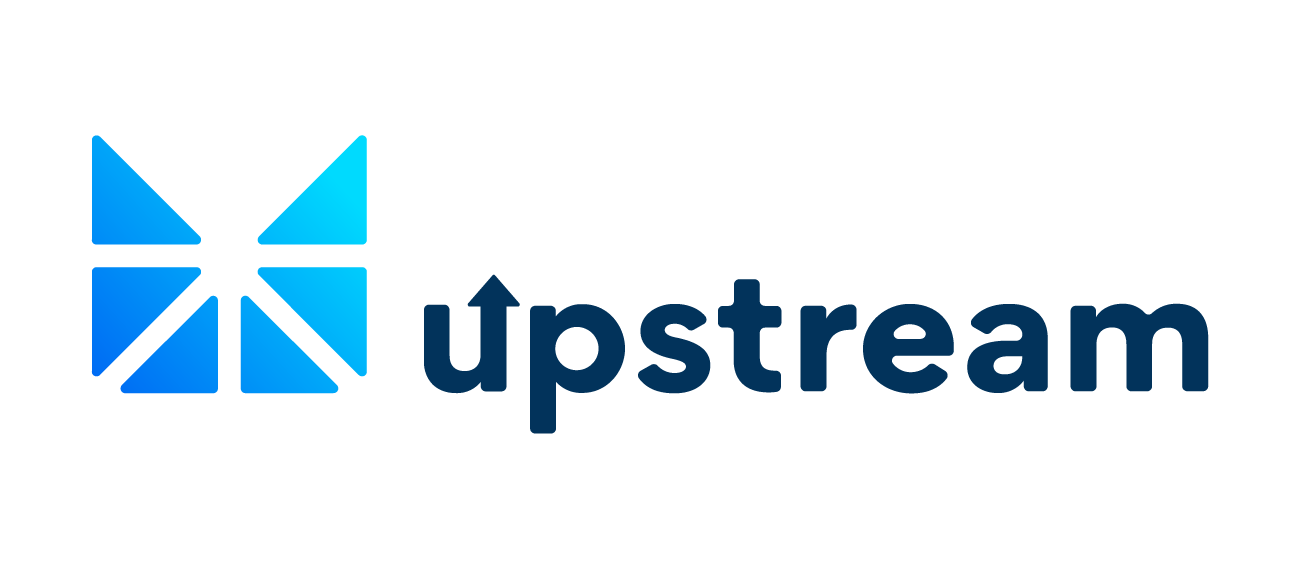
By Anastasia Samaras
According to DappRadar, NFT sales exceeded $25 billion in 2021.¹
Given a large amount of revenue created in such a short period of time, some may be asking how NFT creators are putting these new revenue sources to use. There is no limit to what can be counted as an NFT, and this realization has unleashed a slew of new possibilities coming from NFT creators across a plethora of sectors, especially in the past year.
At Upstream, we’re working with innovative entities across music, entertainment, and sports to execute innovative NFT strategies. Below are some established or developing NFT categories in the marketplace for you to be aware of.
NFT Use Cases
Ticket NFTs
Ticket NFTs are being leveraged to replace or complement tickets, with ownership verified on the blockchain. Such tickets can be secured via auction postings and then placed in wallets on smartphones for easy access.
Ticket NFTs have the ability to bring a physical event into Web 3.0 and commemorate an event, add additional perks, and create value for the ticket as a collectible.NFTs, bring with them a sense of familiarity and community, which, combined with a physical asset can expand these communities tremendously.
Example Ticket NFTs
Coachella, one of the most famous music festivals in the world, introduced NFTs for 2022 to complement their physical passes. All attendees are able to claim a free NFT with their physical passes which can be used to unlock on-site, physical merchandise, food vouchers, and more. A random selection of NFT holders are also eligible for premium upgrades at the festival.
Upstream is also at the forefront of tying physical assets to digital assets. Upstream recently powered a Ticket NFT Airdrop that took place during the Benzinga Listmakers Event which are redeemable for VIP Passes at the Benzinga Trading Festival June 2022 in Las Vegas, NV. Participants claimed the NFTs within hours. Benzinga ticket NFTs are actively being offered on Upstream’s secondary market for $3k, $5k, and even $3.5 million.
PFP NFTs
PFP stands for “profile picture” and an NFT represents ownership of a unique digital asset. For standard NFTs, each person receives a unique token but for the same media image. For PFP NFTs, each person receives a unique token for a unique variation of a media image.
PFP NFTs continue to establish themselves as a staple in the modern internet society, and these PFP NFT avatars have become very popular to set as your profile picture on social media platforms.
Twitter has also introduced NFT profile pictures (PFPs), a new function that enables users who own NFTs to showcase them as their profile pictures in a special Hexagon shape.
Example PFP NFTs
CryptoPunks, for example, is a collection of 10,000 punk avatars, each one unique, and is considered one of the first generative art PFP projects. There are various varieties of punks: Alien, Ape, Zombie, Male, Female, and dozens more combinations of characteristics.
The Bored Ape Yacht Club (BAYC) also showcased a PFP NFT project with 10,000 individual Apes generated from 170 different qualities. You could have “minted” an Ape for .08 ETH ($190 at the time) plus gas fees if you were fortunate enough to have heard about BAYC when they first debuted in April 2021. Today, the average cost of a BAYC NFT is $200,000.²
Charity NFTs
Charity NFTs are NFTs purchased with a charity component attached, whether the NFT is used to fundraise or if the NFT has a royalty attached that supports a social impact initiative of some kind.
NFTs can be an excellent tool for raising money and help organizations expand their donation pool to the crypto community. Rich Zimmerman, Founder and executive director of The Giving Block, a platform that makes it easy for potential donors to donate different types of crypto, said that 2021 was a turning point for the organization’s stance on crypto donations.
More charities and non-profits have begun taking cryptocurrency donations and are even exploring with NFTs in order to fund their efforts.
Example Charity NFTs
Blazed Cats, for instance, donated ETH worth more than $273,000 to the NPO Mental Health America, making it one of the largest NFT-related contributions.³
The Giving Block’s report noted that NFTs might be the single more significant development from 2021 as far as charities and crypto go, with more than $12.3M in donations made from known NFT projects.⁴
Membership NFTs
Membership NFTs grant owners access to online communities, exclusive events, and other perks. With blockchain verified membership, ownership can be more easily transferable.
By enhancing your membership user journey on the internet — you are providing potential members the value of having a membership as well as being an NFT holder. In the future, Cryptocurrencies, Web 3.0 and NFT-based memberships will become increasingly widespread among what companies offer.
Example Membership NFTs
The rare BAYC digital collectibles created on Ethereum’s blockchain also contain a membership component that a limited number of BAYC owners have access to. From this membership, owners are entitled to perks that range from virtual hangout spaces to early access to collaborations with other brands.
Real-world Asset NFTs
Since NFTs contain cryptographic proof of ownership, they can be used to keep track of ownership of physical assets. The tokenization of prestige assets and real estate is presently the focus of many NFT efforts. When you utilize NFTs to purchase and verify ownership of a deed, house, or car, you have additional possibilities.
While these are comparable to established NFTs, they can come backed by tangible assets, warranties, and other contract components.This investment can create residual income as well as create a flow of revenue to be used for upcoming projects.
Example Real-world Asset NFTs
A Florida woman purchased a five-bedroom, three-and-a-half-bath property near Tampa in an online auction through a partnership between real estate companies Propy and Heckler Realty in February 2022, in what could be one of the first home sales utilizing NFTs.
According to Propy, the price was 210 ETH, which was equal to $653,000 at the time of the transaction. For the auction, about 50 people went through the formalities of verifying their identities online. But in the end, there were only two bidders, both of whom had to have at least $650,000 in cryptocurrencies in their digital wallets — the starting price.⁵
Traditional Art NFTs
There are two types of art collectors: traditional art collectors and nontraditional art (NFTs) collectors, each with their own set of expectations. Many galleries don’t always interact with NFT connoisseurs, but some are striving to close the gap.
NFT marketplaces can attract a wide array of participants outside of traditional art establishments, and there are numerous channels where artists may connect directly with buyers.
NFTs are now widely used as certificates of ownership for a variety of media. As a result, NFT artists have been able to prosper outside of the gallery scene.
Example Traditional Art NFTs
Take, for example, Beeple, whose iconic Everydays: The First 5000 Days (2021), a digital collage, sold for $69.3 million as an NFT at a Christie’s auction in March 2021.⁶
Reward NFTs
Reward NFTs are NFTs tied to a rewards program or incentive that brands may have in place.
Brands may build one-of-a-kind experiences using NFTs instead of conforming to existing models. Businesses can turn virtually anything into a digital token, which can be associated with any form of reward or experience.
Example Reward NFTs
Clinique held a promotion for its loyalty club members, granting three lucky winners a limited-edition NFT, which enables them access to new Clinique products each year for the next decade.⁷
Concluding Thoughts
NFTs give investors unique proof of ownership and further access to an exclusive online community with commonality. They go beyond the overt material to provide recipients with new ventures such as game admittance, access to more premium content, fan bases, and more!
We are putting a preface on the importance of being educated about the potential of NFTs. There is a compelling need of breaking new ground on what NFTs can really do. Keep checking back to learn more about new and innovative NFT categories.
Interested brands can reach the team at hello@upstream.exchange to learn how to bring the power of digital merchandise to your fan engagement strategy.

Sources
1 DappRadar 2 NFT Now 3 Blazed Cats 4 Zdnet 5 Fortune 6 The Verge 7 Clinique
About Upstream
Upstream, a MERJ Exchange Market, is a fully regulated global stock exchange for digital securities. Powered by Horizon’s proprietary matching engine technology, the exchange enables investors to trade shares in IPOs, NFTs, U.S., and international dual-listed equities, and celebrity ventures directly from the app https://upstream.exchange/. Interested issuers can reach the team at hello@upstream.exchange.
About Horizon
Horizon is a fintech company that builds and powers global securities exchanges with an integrated suite of software for compliant issuance, management, and secondary trading of securities. Their in-house solutions combine Wall Street and Silicon Valley to power the next generation of securities offerings and trading in the U.S. and globally. Learn more at https://www.horizonfintex.com/.
Disclaimers
Upstream is a MERJ Exchange market. MERJ Exchange is a licensed Securities Exchange, an affiliate of the World Federation of Exchanges, and a full member of ANNA. MERJ supports global issuers of traditional and digital securities through the entire asset life cycle from issuance to trading, clearing, settlement, and registry. It operates a fair and transparent marketplace in line with international best practices and principles of operations of financial markets. Upstream does not endorse or recommend any public or private securities bought or sold on its app. Upstream does not offer investment advice or recommendations of any kind. All brokerage services offered by Upstream are intended for self-directed clients who make their own investment decisions without aid or assistance from Upstream. All customers are subject to the rules and regulations of their jurisdiction. By accessing the site or app, you agreed to be bound by its terms of use and privacy policy. Company and security listings on Upstream are only suitable for investors who are familiar with and willing to accept the high risk associated with speculative investments, often in early and development stage companies. There can be no assurance the valuation of any particular company’s securities is accurate or in agreement with the market or industry comparative valuations. Investors must be able to afford market volatility and afford the loss of their investment. Companies listed on Upstream are subject to significant ongoing corporate obligations including, but not limited to disclosure, filings, and notification requirements, as well compliance with applicable quantitative and qualitative listing standards.

